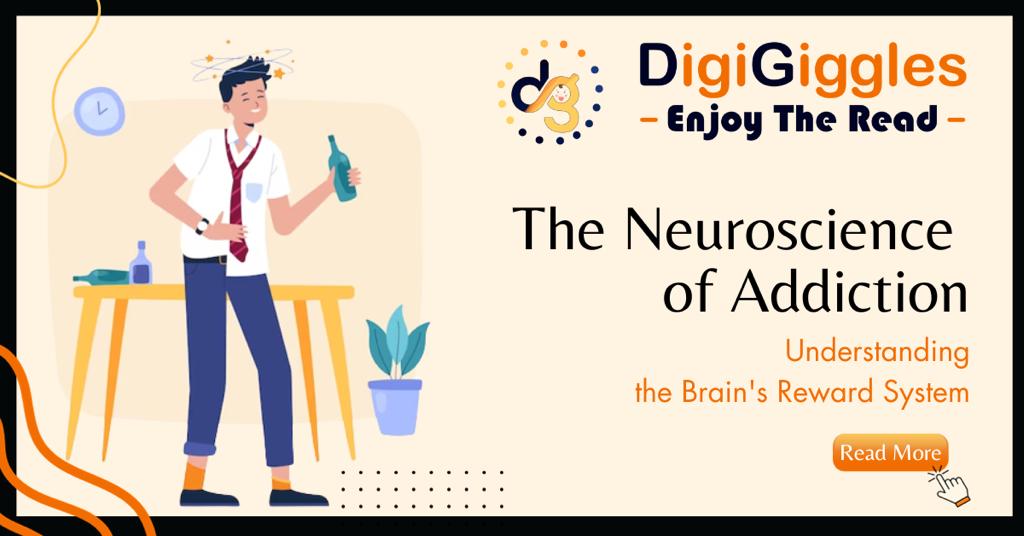
Addiction is a complex and pervasive issue that affects millions of lives worldwide. To comprehend why individuals become ensnared in the cycle of addiction, it’s crucial to delve into the intricate workings of the human brain. The brain’s reward system, a network of neural circuits, plays a central role in the development and perpetuation of addiction. In this article, we’ll explore the neuroscience behind addiction and gain insight into why breaking free from its grip can be an immense challenge.
The Brain’s Reward System: A Brief Overview
At the heart of our brain’s reward system lies a neurotransmitter called dopamine. Dopamine is often referred to as the “feel-good” chemical because it’s associated with pleasure and reward. When we engage in activities that promote survival and reproduction, such as eating, socializing, or achieving goals, dopamine is released, creating a sensation of pleasure and reinforcement.
This release of dopamine is a vital evolutionary mechanism. It encourages us to repeat behaviors that are beneficial for our survival and the propagation of our species. However, in cases of addiction, this system becomes hijacked.
Dopamine and Pleasure: The Crux of Addiction
Substances like drugs or behaviors like gambling trigger an unnaturally large release of dopamine. This surge of pleasure far surpasses what one would experience in a natural, rewarding activity. As a result, the brain adapts by reducing the number of dopamine receptors, diminishing the individual’s ability to experience pleasure from everyday, non-addictive activities.
This desensitization of the reward system is a pivotal aspect of addiction. It means that over time, activities that once brought joy and fulfillment now fall short. This prompts the individual to seek out the addictive substance or behavior in order to recapture that initial euphoria.
The Cycle of Reward and Craving
Thus, a cycle is established: reward, craving, consumption, and temporary relief, followed by intensified cravings once more. It’s this cycle that keeps individuals ensnared in the clutches of addiction. The brain becomes conditioned to associate the addictive substance or behavior with pleasure and relief, further reinforcing the craving.
Breaking this cycle is a monumental challenge. The brain’s wiring has been altered, creating deeply ingrained neural pathways that drive the addiction. This is why individuals struggling with addiction often experience intense cravings even when they are aware of the harmful consequences.
The Role of the Prefrontal Cortex
While the reward system is crucial, addiction isn’t solely governed by pleasure-seeking. The prefrontal cortex, the part of the brain responsible for decision-making, impulse control, and judgment, also plays a pivotal role.
In cases of addiction, this area becomes compromised. The prefrontal cortex is responsible for weighing the long-term consequences of actions against immediate gratification. When compromised by addiction, impulse control weakens. This can lead to impulsive behavior, an inability to resist cravings, and a diminished capacity to make sound decisions.
Neuroplasticity: The Brain’s Ability to Adapt
The brain’s remarkable ability to adapt, known as neuroplasticity, contributes to both the development and recovery from addiction. Through repeated exposure to addictive substances or behaviors, neural pathways are rewired, strengthening the association between triggers and cravings.
However, this same plasticity can be harnessed in the recovery process. With intentional effort and targeted interventions, individuals can gradually rewire their brains towards healthier behaviors. Therapy, support groups, and rehabilitation programs are crucial components of this process, providing the necessary tools and strategies to navigate the path to recovery.
The Challenge of Breaking Free
Understanding the neuroscience of addiction underscores the immense challenge faced by individuals striving to overcome it. It’s not simply a matter of willpower; it’s a battle against deeply ingrained neural pathways and a rewired reward system.
This knowledge emphasizes the importance of comprehensive treatment strategies that address both the physiological and psychological aspects of addiction. Holistic approaches that combine medical intervention, therapy, and lifestyle adjustments offer the best chance of long-term recovery.
Conclusion: Hope and Recovery
While addiction’s grip on the brain is formidable, it’s not insurmountable. Armed with a deeper understanding of the neuroscience behind addiction, individuals and professionals alike can work towards effective prevention and treatment strategies.
Through targeted interventions, therapy, and support, individuals can embark on a journey towards recovery, gradually reclaiming their lives from the clutches of addiction. By recognizing the power of neuroplasticity and the brain’s capacity to adapt, we can foster hope and pave the way for a brighter, addiction-free future.
In conclusion, the neuroscience of addiction provides invaluable insights into the complexities of this pervasive issue. By unraveling the intricacies of the brain’s reward system, we move one step closer to a more compassionate and effective approach to addiction prevention and treatment.